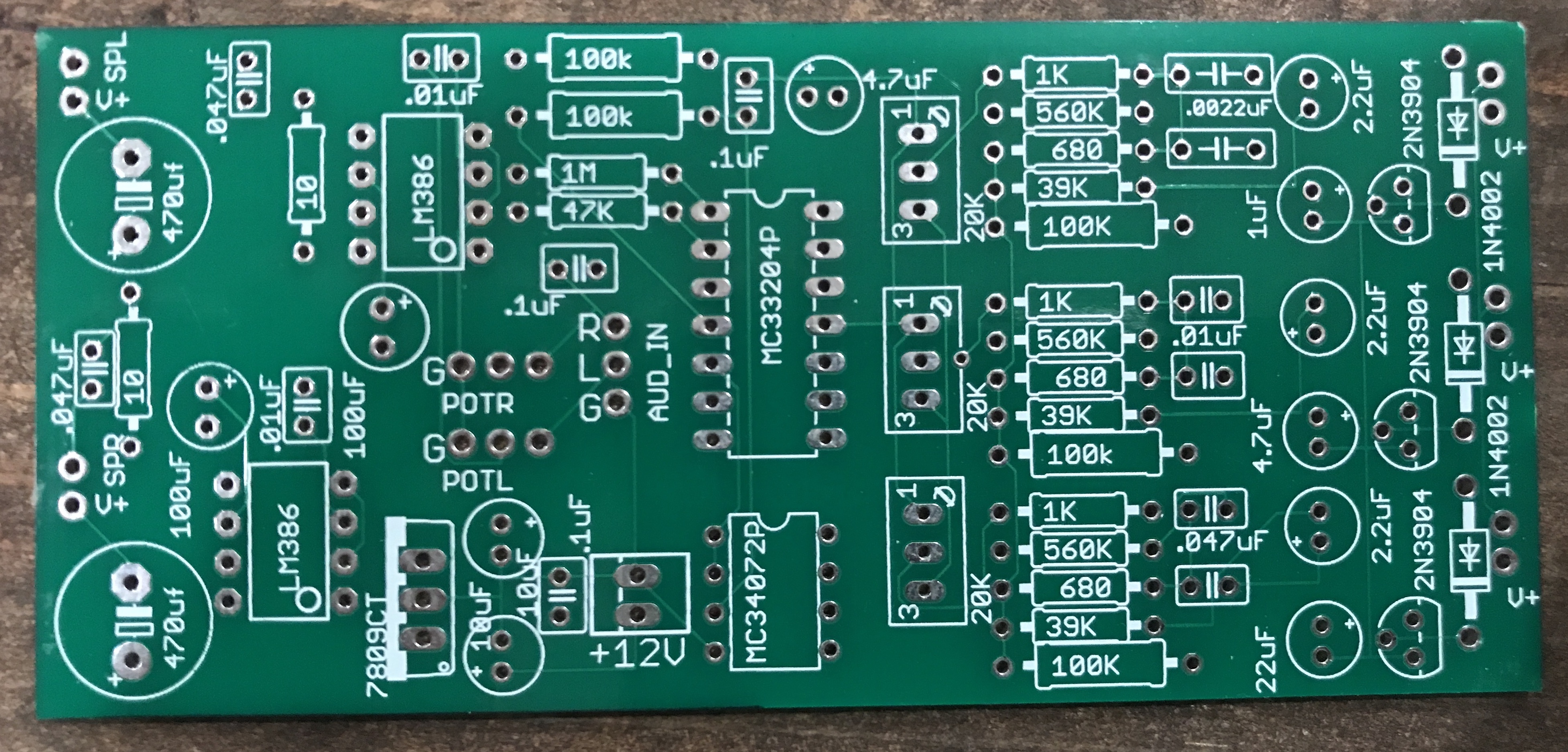One of the many odd traditions of the MIT admissions office is to mail your admissions tube in a shiny silver tube. One of the many odd traditions of incoming undergrads is make that shiny tube into something goofy.
I have always loved lights and music so I thought, why not combine the two and make a speaker with lights? I also wanted a chance to get my hands dirty with PCB design and thought this would be a good opportunity.
To make this work I combined a circuit for a ‘light organ’ and a stereo speaker amplifier onto one board. The light organ is a simple device that turns audio at different frequencies into light at an intensity that varies with the intensity of the sound at that frequency. My light organ had three filters, a low pass, mid band pass, and a high pass filter. These roughly filtered out audio from the low bass and percussion, mid vocals and instruments, and higher cymbal type things. The output of these filters was then put through a peak detecting circuit which in turn was fed into a transistor amplifier that controlled the current going through an LED. All together, it mean when there was a high amplitude of signal at some frequency band (ie. a kick drum hits) the LEDs would light up.
The audio side was even more simple, just two audio op-amps driving speakers. The tube has a cable to plug into a line in port. The sound quality of the tube actually ended up being okay, I didn’t do any work to optimize the acoustics of the tube, but it was a fun lesson in how that matters. The difference in how things sound when a speaker is installed in the tube vs. in free air is interesting. The additional speaker on the other side also changes the audio performance.
To design the PCB I used EAGLE, mainly because I was in high school and it’s free.

This ended up being the first PCB I ever made and, unbelievably, it worked on the first try. Of course the board could have been more elegant. I didn’t know about proper grounding techniques and other good PCB design at the time. This board can actually pick up radio signals if the volume is all the way up and there is nothing connected to it.

The mechanical design was also fun, I hand routed some wood pieces to hold the speaker on the end. Theres a very elegant single piece that holds the PCB, LEDS, and light reflectors and baffles that slid inside the tube behind the MIT cut outs and diffusing material. I wish I took a picture of it…

Of course all this description is nothing compared to watching and listening to it in action so here’s a video!

